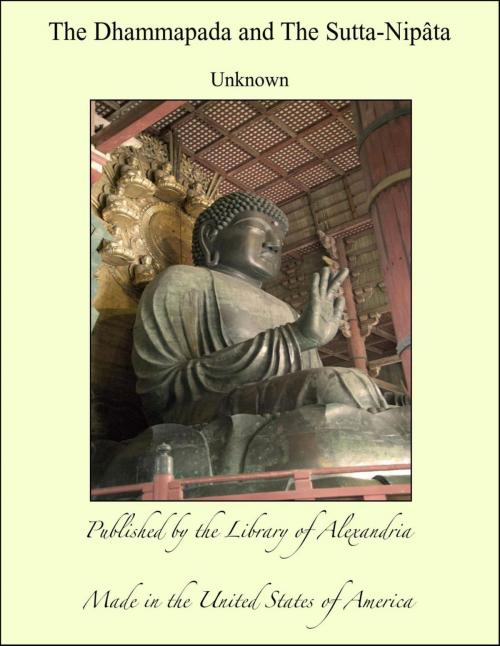The Dhammapada and The Sutta-Nipâta
Nonfiction, Religion & Spirituality, New Age, History, Fiction & Literature| Author: | Unknown | ISBN: | 9781465580672 |
| Publisher: | Library of Alexandria | Publication: | March 8, 2015 |
| Imprint: | Language: | English |
| Author: | Unknown |
| ISBN: | 9781465580672 |
| Publisher: | Library of Alexandria |
| Publication: | March 8, 2015 |
| Imprint: | |
| Language: | English |
THE Dhammapada forms part of the Pâli Buddhist canon, though its exact place varies according to different authorities, and we have not as yet a sufficient number of complete MSS. of the Tipitaka to help us to decide the question. Those who divide that canon into three Pitakas or baskets, the Vinaya-pitaka, Sutta-pitaka, and Abhidhamma-pitaka, assign the Dhammapada to the Sutta-pitaka. That Pitaka consists of five Nikâyas: the Dîgha-nikâya, the Magghima-nikâya, the Samyutta-nikâya, the Anguttara-nikâya, and the Khuddaka-nikâya. The fifth, or Khuddaka-nikâya, comprehends the following works: 1. Khuddaka-pâtha; 2. DHAMMAPADA; 3. Udâna; 4. Itivuttaka; 5. Sutta-nipâta; 6. Vimânavatthu; 7. Petavatthu; 8. Theragâthâ; 9. Therîgâthâ; 10. Gâtaka; 11. Niddesa; 12. Patisambhidâ; 13. Apadâna; 14. Buddhavamsa; 15. Kariyâ-pitaka.
THE Dhammapada forms part of the Pâli Buddhist canon, though its exact place varies according to different authorities, and we have not as yet a sufficient number of complete MSS. of the Tipitaka to help us to decide the question. Those who divide that canon into three Pitakas or baskets, the Vinaya-pitaka, Sutta-pitaka, and Abhidhamma-pitaka, assign the Dhammapada to the Sutta-pitaka. That Pitaka consists of five Nikâyas: the Dîgha-nikâya, the Magghima-nikâya, the Samyutta-nikâya, the Anguttara-nikâya, and the Khuddaka-nikâya. The fifth, or Khuddaka-nikâya, comprehends the following works: 1. Khuddaka-pâtha; 2. DHAMMAPADA; 3. Udâna; 4. Itivuttaka; 5. Sutta-nipâta; 6. Vimânavatthu; 7. Petavatthu; 8. Theragâthâ; 9. Therîgâthâ; 10. Gâtaka; 11. Niddesa; 12. Patisambhidâ; 13. Apadâna; 14. Buddhavamsa; 15. Kariyâ-pitaka.















